- This topic has 6 replies, 4 voices, and was last updated 11 years, 3 months ago by
 William Stewart.
William Stewart.
-
AuthorPosts
-
10 September 2014 at 9:39 pm #573382
 Robin VannParticipant
Robin VannParticipantThere was a bright fireball visible tonight over North Warwickshire at just after 21:00 BST. I am located at 52° 29′ N, 1° 35′ W.
I noticed the object as it appeared in the NE in Andromeda, passing through Draco and appearing to fragment slightly just before being lost to view in Böotes in the NW, the whole taking approximately 2 seconds. The magnitude was constant and considerably more luminous than that of Venus’ maximum though I could not estimate it reliably. The latter part of the pass was accompanied by a ‘fizzing’ sound which became noticable around the time of the partial fragmentation – as the sound would reach me later than the light it is possible that the sound was actually associated with the whole pass.
I would be very interested to know if anyone else saw the event.
Robin Vann, Filongley, Warwickshire.
11 September 2014 at 1:09 am #576686 Alex PrattParticipant
Alex PrattParticipantHi Robin,
I think my Leeds_SE meteor video camera recorded the early phase of the same event.
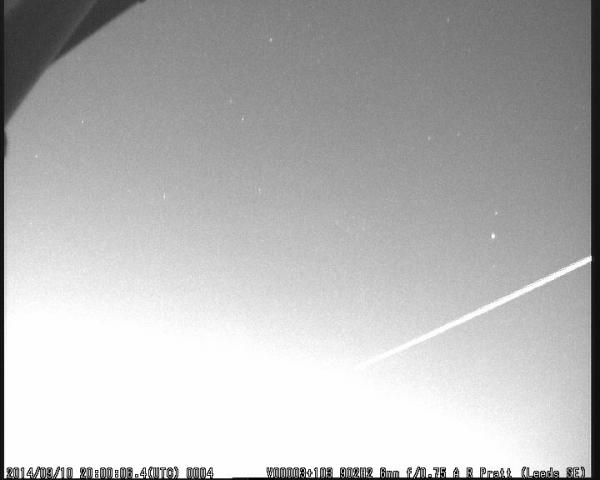
It timed its appearance at 20:00:05.3 UTC but of course the start of the trail was swamped by Moonlight.
The UFO Analyser software gave it a magnitude of -0.4 as it left my FOV. Yet again, the bright sky will have affected this estimate.
I’m sure that other video stations will have recorded the meteor, so that we can identify its shower membership, ground track and solar system orbit.
Clear skies,
Alex.
11 September 2014 at 7:54 am #576687 Nick JamesParticipant
Nick JamesParticipantHi Robin/Alex,
Yes this was caught on my Chelmsford NE camera too. Combining my data with that from Alex shows that the ground track runs from Just north of Peterborough to just north of Birmingham. We’ll have more details for you soon.
11 September 2014 at 8:14 am #576688 William StewartParticipant
William StewartParticipantHi All,
Detected from Ravensmoor too. Combining data with that from Alex and Nick, a provisional analysis suggests that the original orbit of the meteoroid was of a low inclination (5.4 degrees) with an aphelion in the vicinity of the asteroid belt.
A sporadic, the absolute magnitude is -1.9 though this may be an underestimate as a consequence of the twilight conditions reducing the number of stars available for comparison.
Suspect this was detected by others so more detail to follow.
Best regards
William
11 September 2014 at 8:17 am #576689 William StewartParticipant
William StewartParticipantOops … neglected to insert images!
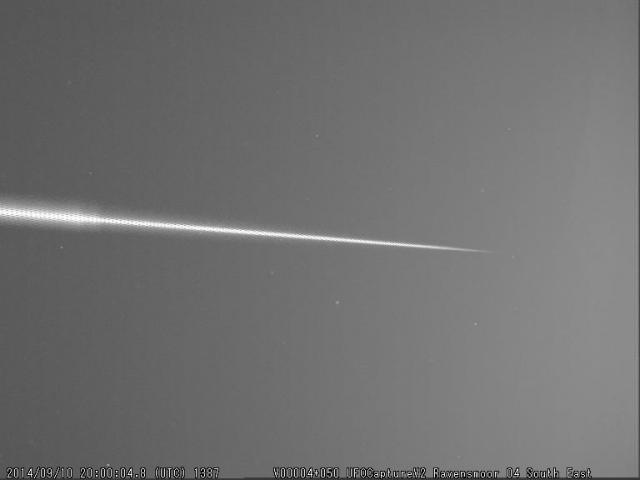
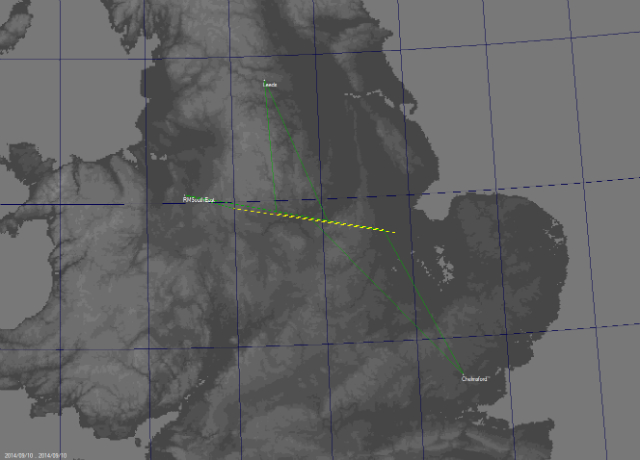
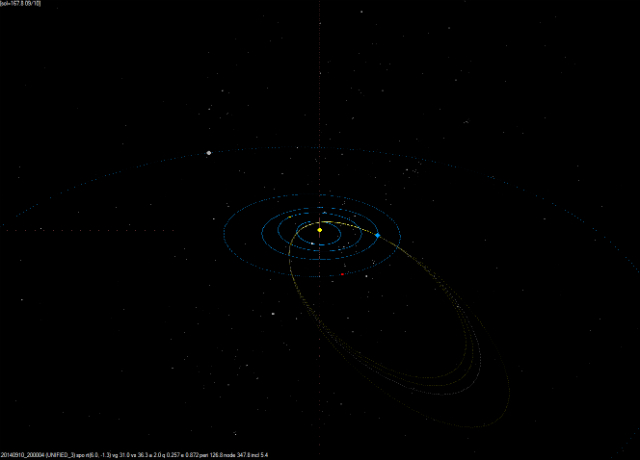 11 September 2014 at 10:09 am #576690
11 September 2014 at 10:09 am #576690 William StewartParticipant
William StewartParticipantMartin Kessel from Stoke on Trent has been in touch to report that he too captured this event on video. Martin writes “My old camera started working a couple of days ago, just in time to record this last night. Meteor heading west over the south end of Stoke on Trent, shines through the cloud (all stars covered) and goes well past the zenith at quite a high speed.“
Martin’s video can be viewed here: http://www.youtube.com/watch?v=Y3bMaqEjobI&feature=youtu.be
Best regards
William
11 September 2014 at 8:39 pm #576691 William StewartParticipant
William StewartParticipantThis meteor was also caught by the one of the cameras a South Downs Planetarium (courtesy John Mason & Russ Slater) and this data has helped refine the ground track. Now have increased confidence too in the orbit.
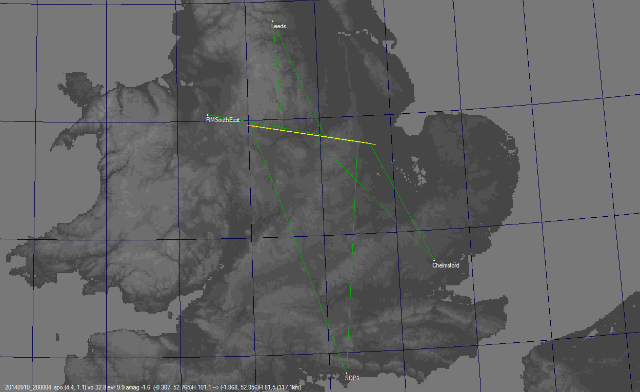
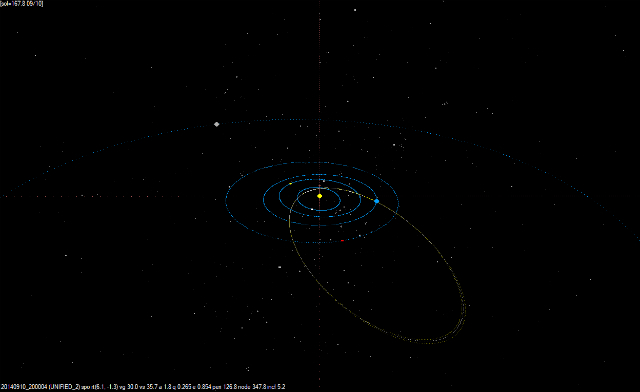
The previously advised characteristics remain essentially unchanged. Thanks to everyone who contributed to this analysis.
Best regards
William
-
AuthorPosts
- You must be logged in to reply to this topic.
